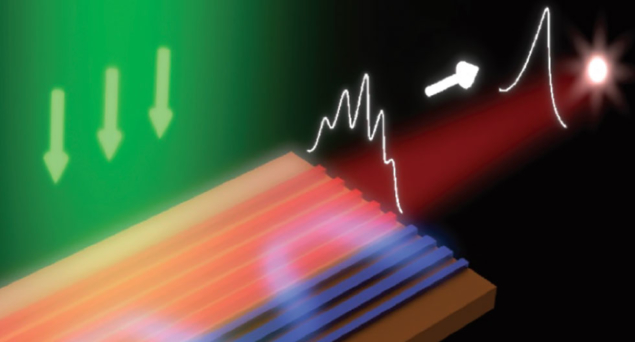
Ideas from supersymmetry have been used to address a longstanding challenge in optics – how to suppress unwanted spatial modes that limit the beam quality of high-power lasers. Mercedeh Khajavikhan at the University of Central Florida in the US and colleagues have created a first supersymmetric laser array, paving the way towards new schemes for scaling up the radiance of integrated semiconductor lasers.
Supersymmetry (SUSY) is a possible additional symmetry of space–time that would enable bosonic and fermionic degrees of freedom to be “rotated” between one another. Devised in the 1970s in the context of particle physics, it suggests the existence of a mirror-world of supersymmetric particles and promises a unified description of all fundamental interactions. “Even though the full ramification of SUSY in high-energy physics is still a matter of debate that awaits experimental validation, supersymmetric techniques have already found their way into low-energy physics, condensed matter, statistical mechanics, nonlinear dynamics and soliton theory as well as in stochastic processes and BCS-type theories, to mention a few,” write Khajavikhan and collaborators in Science.
The team applied the SUSY formalism first proposed by Ed Witten of the Institute for Advanced Study in Princeton to force a semiconductor laser array to operate exclusively in its fundamental transverse mode. In contrast to previous schemes developed to achieve this, such as common antenna-feedback methods, SUSY introduces a global and systematic method that applies to any type of integrated laser array, explains Khajavikhan. “Now that the proof of concept has been demonstrated, we are poised to develop high-power electrically pumped laser arrays based on a SUSY design. This can be applicable to various wavelengths, ranging from visible to mid-infrared lasers.”
To demonstrate the concept, the Florida-based team paired the unwanted modes of the main laser array (comprising five coupled ridge-waveguide cavities etched from quantum wells on an InP wafer) with a lossy superpartner (an array of four waveguides left unpumped). Optical strategies were used to build a superpartner index profile with propagation constants matching those of the four higher-order modes associated with the main array, and the performance of the SUSY laser was assessed using a custom-made optical setup. The results indicated that the existence of an unbroken SUSY phase (in conjunction with a judicious pumping of the laser array) can promote the in-phase fundamental mode and produce high-radiance emission.
“This is a remarkable example of how a fundamental idea such as SUSY may have a practical application, here increasing the power of lasers,” says SUSY pioneer John Ellis of King’s College London. “The discovery of fundamental SUSY still eludes us, but SUSY engineering has now arrived.”
Further reading
M Hokmabadi et al. 2019 Science 363 623.





